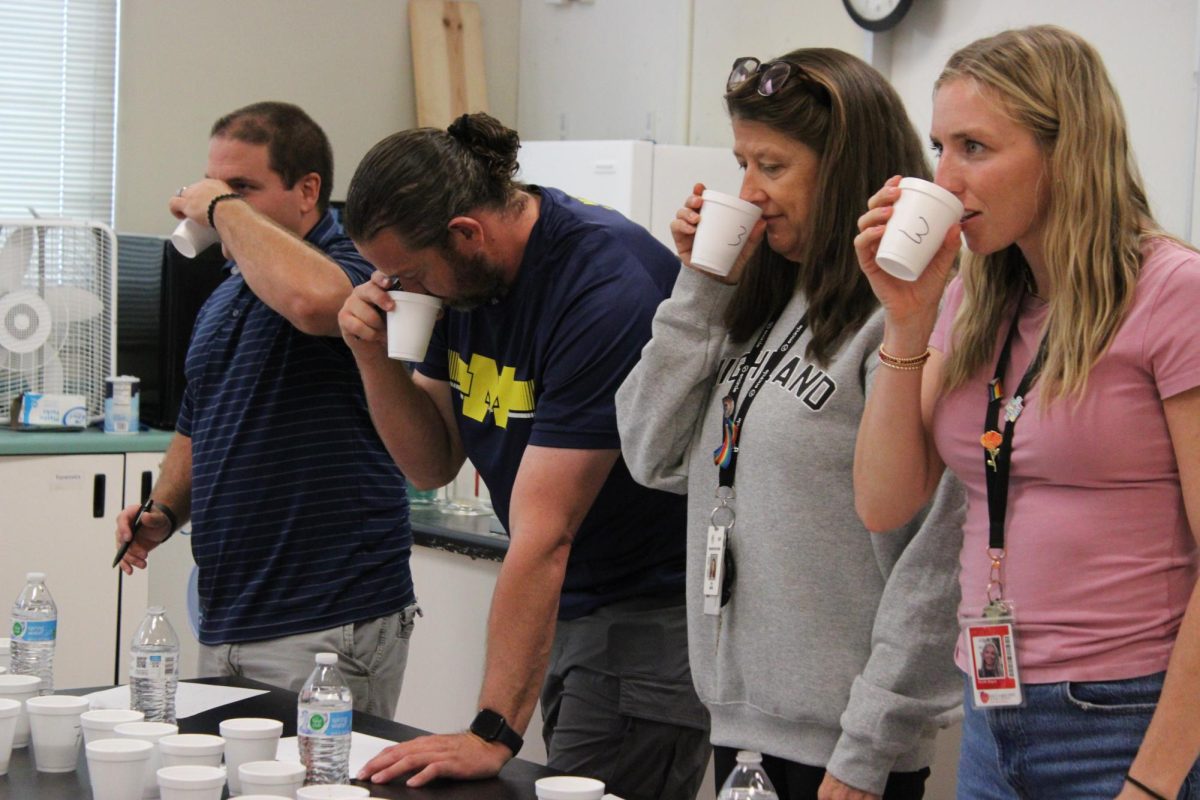Highland: See you Later this Fall

Highland High to delay start times for upcoming school year.
May 25, 2021
“BEEP, BEEP, BEEP.”
Your alarm rings in a blaring cacophony, piercing your ears with the sound that high school students know all too well. It’s time to go to school.
Despite being burdened with the knowledge of the impending start to another day, you—like many other students—might grudgingly reach over to find the snooze button. The again and again until the mad dash to try and get to school on time creates chaos and panic.
A vicious cycle commences, where your sleep deprived body and your annoyingly persistent wakeup call battle for influence over your consciousness.
Sound familiar?
This story is, unfortunately, not unique, and almost an everyday occurrence for numerous teenagers. However, a newly decided policy might just change this for students at Salt Lake City School District high schools.
Despite setbacks in finalizing the decision due to the COVID-19 pandemic, the SLCSD Board officially voted in March to change the start times for each high school in the district to 8:45 in the morning for the 2021-22 school year.
The current start time at Highland and other high schools in the district is 8:00, a 15-minute delay from previous years that was adjusted to meet the demands created due to COVID-19 restrictions. To many, this presents itself as quite an early start to the day—especially when they lack the eight to ten hours of sleep that are recommended by pediatricians.
For some students, especially those who live a little farther away from campus, a late start would be especially beneficial.
Cameron Geiger, who lives in West Jordan, is incredibly excited to start later next school year. Like some of his peers, he is woken up by his mom which—in his own words— “is not the easiest thing for her to do.”
This arrangement causes potential for friction between the two, especially when a tired Geiger does not want to give up on precious minutes of sleep.
“I think it’s really helpful to wake up later, for mental health and to be able to have more sleep,” Geiger said.
Principal Jeremy Chatterton, an overseer of the committee working to implement later start times, spoke enthusiastically about the plan.
“What we’ve done is gone through a two-tier start time so every school in the district would either have a start time of 8:00 or 8:45,” Chatterton said.
The proposal for next year includes an 8:45 start time for all high schools in the district, as compared to an 8:00 time for all middle schools, and one or the other for elementary schools, respective to transportation constraints.
The new plan comes after important discussions were taking place pertaining to students’ mental and physical health, as it is affected by a concerning lack of sleep.
A study from Stanford Medical School labeled the high school age group as a ‘chronically sleep-deprived generation.’
“According to a 2006 National Sleep Foundation poll, the organization’s most recent survey of teen sleep, more than 87 percent of high school students in the United States get far less than the recommended eight to ten hours, and the amount of time they sleep is decreasing — a serious threat to their health, safety and academic success,” the study said.
Stanford Medical also pointed out the numerous consequences that sleep deprivation can have on the human body, including an inability to concentrate, poor grades, drowsy-driving incidents, anxiety, depression, thoughts of suicide and even suicide attempts.
The same study went on to demonstrate the effectiveness of later start times in high schools, using independent studies from 1997, 2010, and 2014 which all found positive results from starting later.
These included a boost in attendance, a decrease in the likelihood of car crashes involving students, improvements in alertness and mood, and—most importantly—more sleep.
The evidence behind the recent decision for the SLCSD is compelling, but student reactions still manage to seem varied—even apprehensive in some.
Halle Backman, a freshman, has a different perspective on the later start times.
“I like getting done with school earlier, so we still have so much time after school,” Backman said. “I think it’s really good [as it is], I would even be fine going earlier.”
Those voicing concerns over the new start time point to extra-curricular activities and after-school jobs as potential conflicts. While Chatterton recognizes the significant concerns surrounding ending later, he emphasized that the committee worked hard to form a realistic schedule, taking all these things into account.
“We would actually keep the schedule we have currently, but it would just get pushed back 45 minutes. So right now, we start at 8:00 and get out at 2:15. Next year, we would start at 8:45 and get out at [3:15],” Chatterton said.
Chatterton also mentioned working in a replacement for “Late Start Monday’s,” and potentially looking at some kind of “early out,” or a shortened schedule.
While the plan for next year seems to be leaning towards some kind of normal, with a return to the typical five-day school week and with lessened flexibility between in-person and remote classes, there are some very clear changes in store.
It remains to be seen whether the later start times will have the desired effect on the Highland community. That said, logging a couple of more hours of sleep could be good for every teenager after such a stressful year, as well as for any parents (or alarm clocks) tasked with waking them up.




























